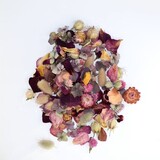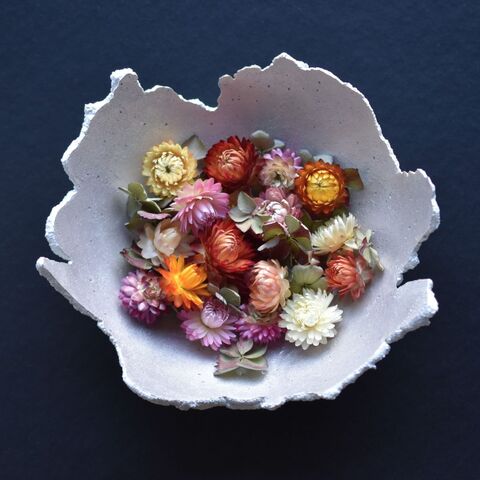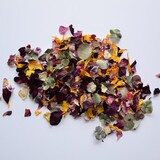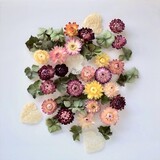Grow Your Own Potpourri: The Best Botanicals to Plant for Natural Fragrance
There’s something nostalgic and grounding about the gentle scent of potpourri. A jar or bowl of dried petals and herbs can brighten a space, bringing a room to life with floral notes, citrusy freshness, or spicy warmth. Best of all, potpourri doesn’t need to come from a store. With a little planning, you can grow your own fragrant botanicals at home and craft seasonal blends that are not only smell amazing but look beautiful too.
Why Make Your Own Potpourri?
Store-bought potpourri often relies on synthetic fragrances and dyes. Homemade potpourri is different—it's natural, subtle, and personal. It allows you to:
- Avoid artificial chemicals and colors
- Make use of garden trimmings and dried petals and flower heads
- Create scent blends that reflect the seasons or your mood
- Give thoughtful, handmade gifts
- Reduce waste and packaging
And the best part? You can tailor your potpourri to your favorite scents, from soft and floral to zesty, woody, or spicy.
I personally don’t even always scent my potpourri, like when pairing with a handmade concrete bowl and are using soley for aesthetics where it’s all about the beauty of the flowers.
What Makes a Good Potpourri Botanical?
A great potpourri mix typically includes:
- Base ingredients: Dried flowers or herbs that hold their shape and color well.
- Fixatives: Ingredients like orris root or dried citrus or cut loofah shapes that help lock in scent
- Scent boosters: Essential oils or strongly aromatic herbs and spices.
When selecting plants to grow, focus on those with:
- Strong, lasting fragrance
- Color retention when dried
- Versatile uses (like in tea or skincare as well)
Top Botanicals to Grow for Homemade Potpourri
Roses
Roses are a classic base for floral potpourri. Choose old-fashioned or highly scented varieties like Damask or English roses. The petals retain both scent and shape when dried.
Growing tip: Plant in a sunny spot with well-drained soil and prune to encourage repeat flowering.
Best for: Romantic or vintage-style potpourri.
Lavender
Lavender is one of the best-known potpourri botanicals. The buds dry beautifully, retain their fragrance for months, and blend well with many other scents.
Growing tip: Needs full sun and well-drained soil. English lavender (Lavandula angustifolia) is ideal for scent.
Best for: Calming and long-lasting blends.
Sunflowers
Sunflower petals add a pop of yellow color to potpourri. While not scented, their visual appeal makes them a popular addition.
Growing tip: Easy to grow from seed; harvest the petals when they pop off (before they start to fade in color).
Best for: Bright, cheerful blends and visual texture.
Eucalyptus Leaves
A more unusual potpourri herb, eucalyptus has a clean, flat leaf that adds to the fragrance. It dries well and offers an vintage touch to floral-heavy blends.
Growing tip: Prefers dry, sunny conditions and well-drained soil.
Best for: Balancing sweet or citrusy mixes with a refreshing green note.
Lemon Balm or Lemon Verbena
Lemon balm or lemon verbena brings a fresh citrus scent to potpourri. They blend particularly well with lavender and dried citrus peels.
Growing tip: Lemon Balm is a vigorous grower; best in a container or controlled garden bed.
Best for: Energizing, brightening potpourri.
Mint
Both peppermint and spearmint can be used in potpourri. The leaves dry well and add a crisp, invigorating scent.
Growing tip: Like lemon balm, mint spreads easily—grow in a pot to contain it.
Best for: Freshening up spaces like bathrooms or closets.
Gomphrenas
Gomphrena heads don’t add scent, but they keep their beautiful colors when dried. Use them as a visual enhancer in your mix.
Growing tip: Easy to grow from seed; prefers sunny spots.
Best for: Adding color contrast and visual interest.
Strawflowers (Helichrysum)
Another fantastic flower for texture and color. Strawflowers come in a variety of warm shades and hold their shape for years.
Growing tip: Grow in full sun; deadhead to encourage more blooms.
Best for: Rustic, earthy potpourri blends.
Citrus Peels
While not grown for flowers, lemon, orange, and lime trees offer fragrant peels that can be dried and added to potpourri. The peels add zest and act as natural fixatives.
Growing tip: Suitable for pots in colder areas; give full sun and regular feed.
Best for: Uplifting, energizing blends.
Scented Geraniums (Pelargoniums)
The leaves of scented geraniums (rose, lemon, mint, or nutmeg-scented) hold fragrance well when dried and are ideal for potpourri.
Growing tip: Grow in pots in a sunny position and prune regularly. They are frost tender
Best for: Adding depth and uniqueness to scent profiles.
Loofah Shapes
Another fantastic addition for texture and scent fixation. Can be cut in a variety of shapes such as little hearts, stars or leaf shape. They can also be dyed with food colouring but I prefer the off white color for a vintage potpourri mix
Growing tip: Grow in full sun.
Best for: Rustic, earthy potpourri blends.
If you're wanting a vintage vibe, consider these additions:
- Nigella seeds pods - Tip: shake out the pods well to remove seeds otherwise it looks like mouse poop at the bottom of your beutiful potpourri mix (my customers would contact me to say they had a little giggle at my note explaining that it's just seed and they could grow thier own Nigella with them).
- Hydrangea petals - a tip if selling your mixes, add a note that these petals are no-edible.
- Bunny tail heads
- Statice pieces

Drying Your Botanicals
Proper drying is essential to preserve color and fragrance. Here are a few tips:
- Air dry: Lay petals and herbs on a screen or mesh in a dry area with good air flow. Turn daily.
- Bundle drying: Hang small bunches of lavender, mints and eucalyptus upside down until dry.
- Dehydrator: Use on a low setting (35–40°C or 95–105°F) for petals and leaves that are prone to mold.
Drying usually takes 1–2 weeks, depending on your climate.
Assembling Your Potpourri
Once everything is dry, you’re ready to blend!
Basic Potpourri Recipe:
- 1 cup dried rose petals
- ½ cup dried lavender buds
- ¼ cup dried citrus peel
- ¼ cup dried sunflower petals
- 1 tbsp crushed mint or lemon balm
- 1 tsp orris root powder (or substitute with ground dried citrus peel)
- 5–10 drops of essential oil (optional)
- 4-5 mini loofah hearts (or any shape you choose)
Mix in a large bowl or bag and let it "cure" in an airtight bag or jar for a few days, then display in bowls or sachets.
Tips for Long-Lasting Fragrance
- Store potpourri in sealed containers when not in use.
- Revive with a few drops of essential oil as scent fades.
- Avoid placing potpourri in direct sunlight to preserve color and fragrance.
You can keep it super simple and just have two ingredients or add lots of petals and flower heads. Use what you have or grow what flowers you like to add. Growing your own potpourri garden is a fragrant, fulfilling project that connects you with the seasons and adds a personal touch to your home. You don’t need a large space, many potpourri botanicals grow well in pots or garden beds. Start small, experiment with different scents, and enjoy the beauty of nature long after the growing season ends.
Posted: Friday 1 August 2025



